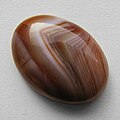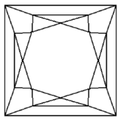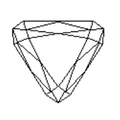Editing Internet Texts/Gemstones
This is a Wikiversity page on gemstones, which are cut and polished minerals, organic materials or even rocks used mainly to make jewelry and all kinds of adornments. It includes a list of gemstones with descriptions of their most basic features like color, form and hardness (according to Mohs scale), places where they are mined, etymology of their names, and also some interesting facts like beliefs and superstitions linked to them or uses other than making jewelry. The project also includes a short description of different techniques of cutting gemstones, beginning with the simplest ones like cutting en cabochon, to the most elaborate methods of cutting – different brilliant cuts.
This page was created mainly for people who already know basic terms associated with gemstones and minerals. The main part of the project is an alphabetical list of gemstones which can serve as a catalog containing basic information on gemstones. Every subpage describing a particular gemstone features a table, in which following information can be found: composition, class, crystal system, Mohs' hardness, fracture, cleavage, lustre, streak and mining localities.
Everyone is welcome to develop the page further.
Before you start
[edit | edit source]Before you begin browsing this page, it may be important to make sure if you know the following terms, as in the initial version they will not be defined or explained. The terms are hyperlinked to Wikipedia articles so you can easily improve your knowledge or get the basic information.
Alphabetical list of gemstones
[edit | edit source]|
A
B C
|
D E G H I J K
|
L M N O P R
|
S T V
|
Z
|
Cutting and polishing gemstones
[edit | edit source]Most gemstones used in jewelery have to be properly cut and polished in order to give them a desired shape and influence its lustre, brilliance and color.
Cabochone cutting
[edit | edit source]Cutting en cabochon is the easiest technique of cutting gemstones. It is usually applied to opaque gems. The result is generally a shape with rounded obverse and flat reverse. The stones are grinded, shaped and polished with grinding wheels.
Cabochone cutting is the most popular and the oldest technique of gem cutting.
-
Moonstone cabochon ring
-
Agate
-
Malachites
Cutting facetes
[edit | edit source]Cutting facetes (flat faces on geometric shapes) into gemstones is a far more complex and advanced technique than cabochone cutting. Facets can be arranged in hundreds of different ways, but the most famous is the brilliant cut, used mainly for diamonds.
The basic aims of cutting gems with a faceting machine are enchancing the gem's brilliance, luster and fire. Brilliance is the amount of light reflected from the interior of the gem, luster is the light reflected from a gem's surface and fire indicates the ability of a gemstone to split light into its spectral colors (it is also referred to as dispersion). [1]
Examples of different types of cuts
[edit | edit source]-
Brilliant cut (diamond)
-
Brilliant cut diagram
-
Yellow sapphire, emerald cut
-
Emerald cut diagram
-
Diamond princess cut
-
Princess cut diagram
-
Trilliant cut diagram
Test your knowledge
[edit | edit source]Quiz 1: Name the gemstone
Quiz 2: Basic properties of gemstones










